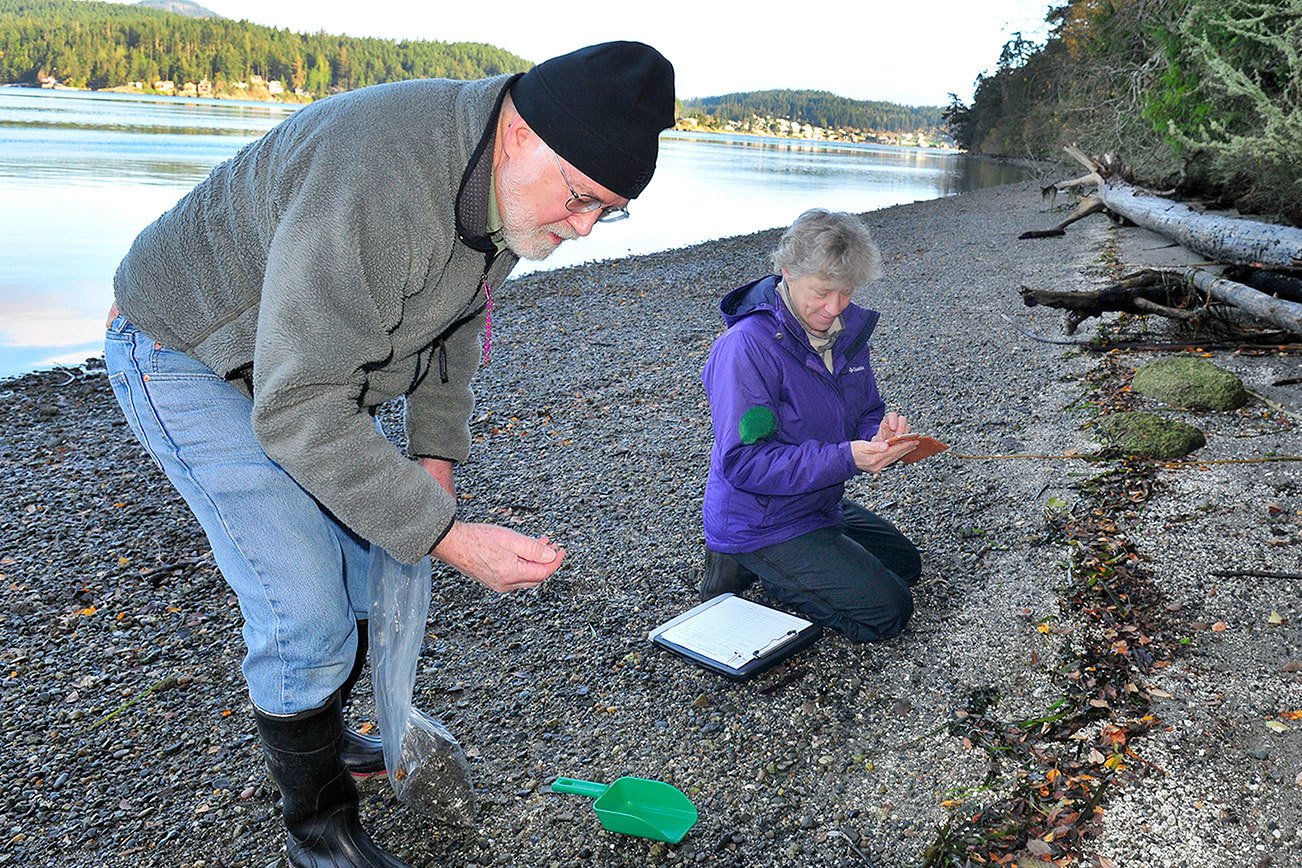Out of a few scoops of sand came an exciting discovery.
A volunteer group that regularly surveys Whidbey Island shorelines for evidence of forage fish spawning recently learned that one of its samples from a beach on North Whidbey revealed more than 100 Surf Smelt eggs.
The finding from the beach in Cornet Bay was considered significant. In forage fish spawning surveys that date back to the 1970s, Surf Smelt eggs had never been discovered in Cornet Bay.
It was enough to make the group that has participated in the survey project for years a little giddy.
“It was really satisfying,” said Ruth Richards, a member of the Marine Resources Committee of Island County, which leads the project with support from Sound Water Stewards.
“We had been sampling there for years. And people were sampling there years and years before that.”
“To finally have something show up is really exciting.”
Forage fish spawning surveys on Whidbey shorelines were started in the 1970s by Washington Department of Fish and Wildlife biologist Dan Penttila, who continued them for 40 years.
After Penttila retired, the MRC of Island County continued his work, understanding the importance of forage fish to marine ecosystems, particularly as a vital food source for salmon and other marine animals.
Forage fish include Surf Smelt, Pacific Sand Lance and Pacific Herring.
“They’re sort of the bottleneck in the marine food web, so it’s really important to protect their habitat,” said Anna Toledo, MRC coordinator.
The group conducts its forage fish spawning surveys once a month in historic sampling sites on Whidbey and Camano islands and twice a month in areas where shoreline restoration projects have been done such as at Cornet Bay.
The sample that contained the Surf Smelt eggs was taken Sept. 15 on the shoreline east of the boat ramp at Deception Pass State Park.
The sample was taken about 1,000 feet to the east of the major Cornet Bay nearshore restoration project started in 2012, where a massive creosoted bulkhead was removed and the beach re-graded to a natural sloping state.
“It was exciting to hear that our MRC had discovered Surf Smelt eggs right by this restoration project where Surf Smelt eggs had not been found before,” Toledo said.
Penttila, who lives in Anacortes, still assists the forage fish spawning survey effort by analyzing the samples.
Penttila serves as a contractor for the state in this capacity.
Richards got an email from Penttila on Oct. 17, revealing the significance of the sample at Cornet Bay, noting it contained abundant evidence of recent Surf Smelt spawning activity.
He counted more than 100 eggs, which are roughly the size of a grain of sand.
“To my knowledge, this is the very first record ever of smelt eggs anywhere within the Cornet Bay beach sampling project,” he wrote.
Evidence of Pacific Sand Lance spawn was found in Cornet Bay in a survey conducted in November 1993.
Surf Smelt and Pacific Sand Lance spawn on sandy, gravelly beaches, Toledo said.
“That’s why it is so important we protect and restore our shorelines,” she said.


